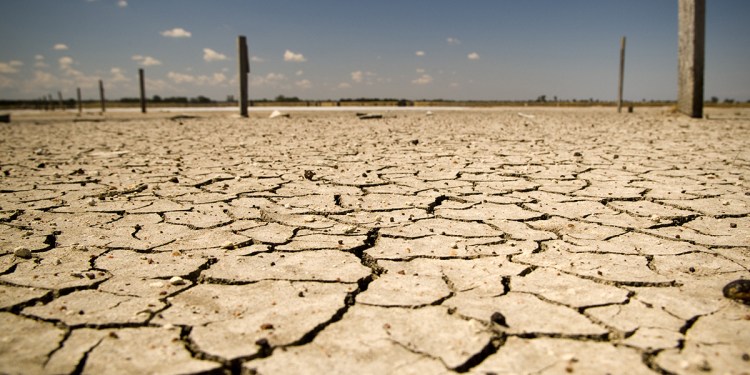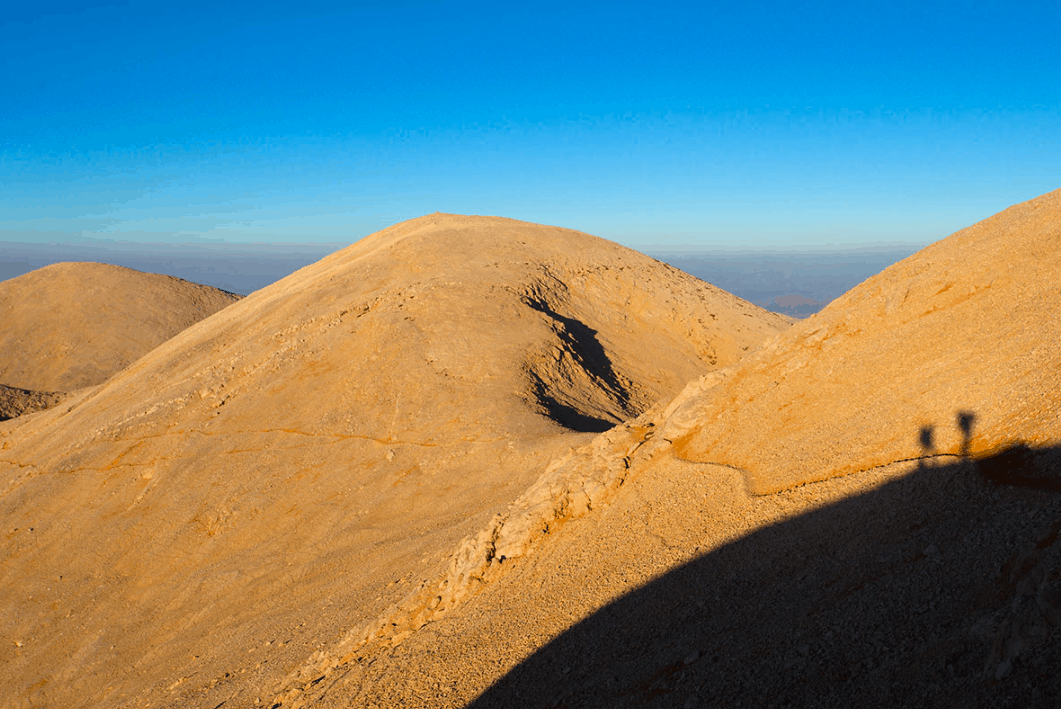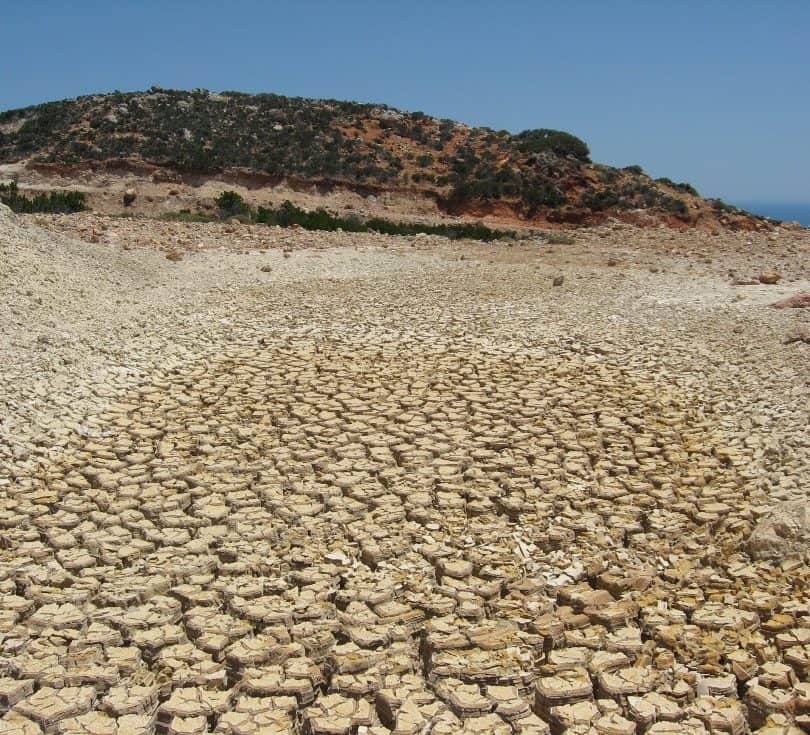An innovative forecasting algorithm tool has been applied for the first time in the strategic plan designed to address the concerning issue of water scarcity for the Region of Crete.
Several weeks of devastating fires combined with drought conditions has already led to dramatic land degradation in many parts of the country in a sequence already well known to scientists: drought followed by fires and then floods.
Greece is currently ranked 26th for water stress in the world and its climate change predictions are bleak with scientists predicting that over the next few decades, “around 30 percent of Greece could be threatened with desertification.”
“Soils will be undermined to the extent that they lose their fertility and die,” Christos Zerefos, head of the Research Centre for Atmospheric Physics and Climatology at the Academy of Athens.
Zerefos said the threat looms large in areas with declining rainfall levels and extreme weather conditions – floods and droughts.
The areas under the greatest threat are the eastern Peloponnese, eastern central Greece, Macedonia and Thrace in the north.
In addition, inhabited Greek islands such as the Aegean islands and parts of Crete face particular water problems. Small catchment areas, low rainfall and geology make it impossible for some to store sufficient water, causing severe shortages during the summer when demand peaks with the influx of tourists.
President and CEO of the World Resources Institute (WRI) Dr Andrew Steer has called water stress “the biggest crisis no one is talking about”.
“Its consequences are in plain sight in the form of food insecurity, conflict and migration, and financial instability,” says Steer
“A new generation of solutions is emerging, but nowhere near fast enough. Failure to act will be massively expensive in human lives and livelihoods.”
 Domino Effect of Natural Hazards: Drought – Fire - Floods
Domino Effect of Natural Hazards: Drought – Fire - Floods
According to Giorgos Tsakiris, an emeritus professor at National Technical University of Athens, specialising in plumbing and land improvement projects, large forest fires are a major secondary natural hazard belonging to the well documented domino-chain of natural hazards - drought, forest fire, flooding rains and landslides.
"The primary natural hazard is drought, which is characterised by reduced soil moisture and results from limited rainfall over a period of time. The conditions that increase the risk of fire are the high temperatures and the high intensity of the winds.
And the domino of natural hazards results in increased flood risk, with all the accompanying phenomena - erosion, landslides, transport of sediments - mainly in the low zones below the burned areas.
In order to address such phenomena, predicted to multiply in the future, being fuelled by the climate crisis, Mr Tsakiris notes that "the effort must start from the deep analysis of droughts in areas at risk, which will be a "barometer" for forecasts of meteorological conditions.”
Innovative tool: Algorithm for Assessing and Forecasting Drought
The recently completed strategic plan for tackling the drought - water scarcity phenomenon for the Region of Crete incorporates an innovative "tool" - an algorithm for assessing and forecasting drought.
According to the professor, based on this algorithm, special drought indicators are calculated based on the data of meteorological stations.
"Today we are ready to propose a drought assessment and forecasting system that is presented internationally for the first time,” he said.
"It is the result of a lot of preparation through decades of research programs.”
The methodology and the calculation algorithm were finalised during the implementation of the action plan by the Water Directorate of the Decentralised Administration of Crete in collaboration with the sustainable water resources management contractor Seeman Environmental.
In its application for Crete, the drought assessment refers to four reference periods of three, six, nine and twelve months, starting at the beginning of the hydrological year in October of each year for the nine spatial units (groups of river basins) in which Crete was divided.
"The calculation algorithm includes a 'routine' that uses geostatistical methods to transfer point results from stations to spatial units.
To characterise the level of drought, the indicators classify the level of drought as mild, moderate, intense and extreme.
“When conditions are classified in the last two, most severe categories, measures must be implemented and monitored by the relevant bodies,” explains Prof. Tsakiris.
This Year’s Annual Forecast According to the Algorithm
As proved by the analysis of drought phenomena in all nine spatial units of Crete, the algorithm makes it possible to predict the drought of the whole year from the characteristics of the drought of the first half of each year "with great reliability, and in most cases, even a level of certainty," Professor Tsakiris claims.
The truth of the matter remains to be proven in real time, with the forecasting model predicting moderate drought this year for the area of Geropotamos - Platis, based on the data of the first half of the hydrological year 2020 -21.
"The forecast indicates the need for careful use of water in all areas and intensive monitoring of the situation for next year, where even moderate drought can create large water shortages, given the cumulative effect of two years," warns Mr. Tsakiris.
The Age-Old Catastrophe of Drought in Crete
In Crete, the phenomenon of drought has always been one of the most significant natural hazards of the island, resulting in water shortage conditions and requiring water restrictions to be put in place in order to meet the water demand for settlements, tourist facilities, industry and agriculture.
As Mr. Tsakiris characteristically states, important research has been conducted for the acquisition of knowledge related to the forecasts in relation to the changes in the hydrometeorological quantities.
He concludes: "It is time to focus on how to tackle and adapt to climate change and to formulate business plans and good practice models for implementation by implementing new appropriate organisational structures that need to be created."
The new algorithm tool for drought assessment and forecasting will help to facilitate and prioritise such measures designed to help mitigate Greece’s worst future water shortages.




